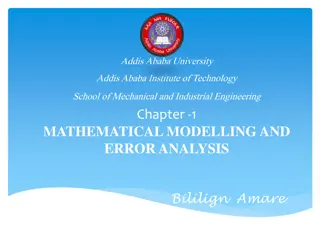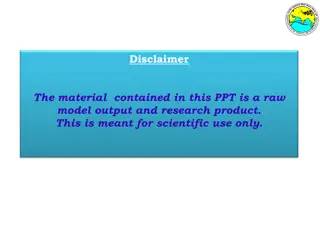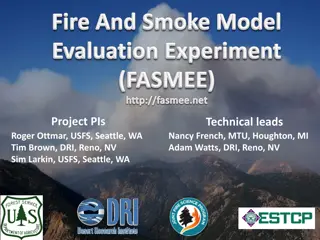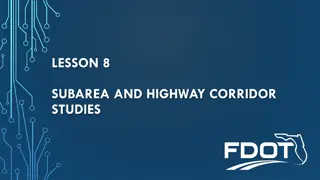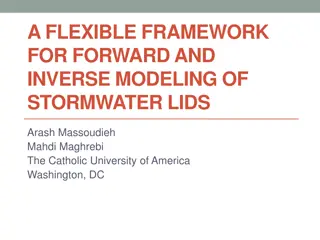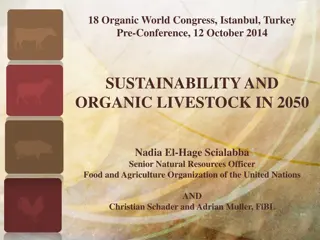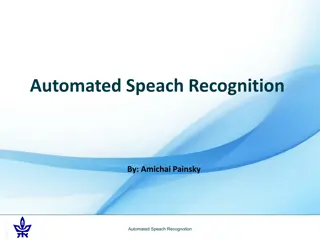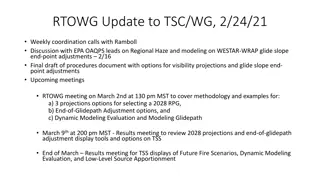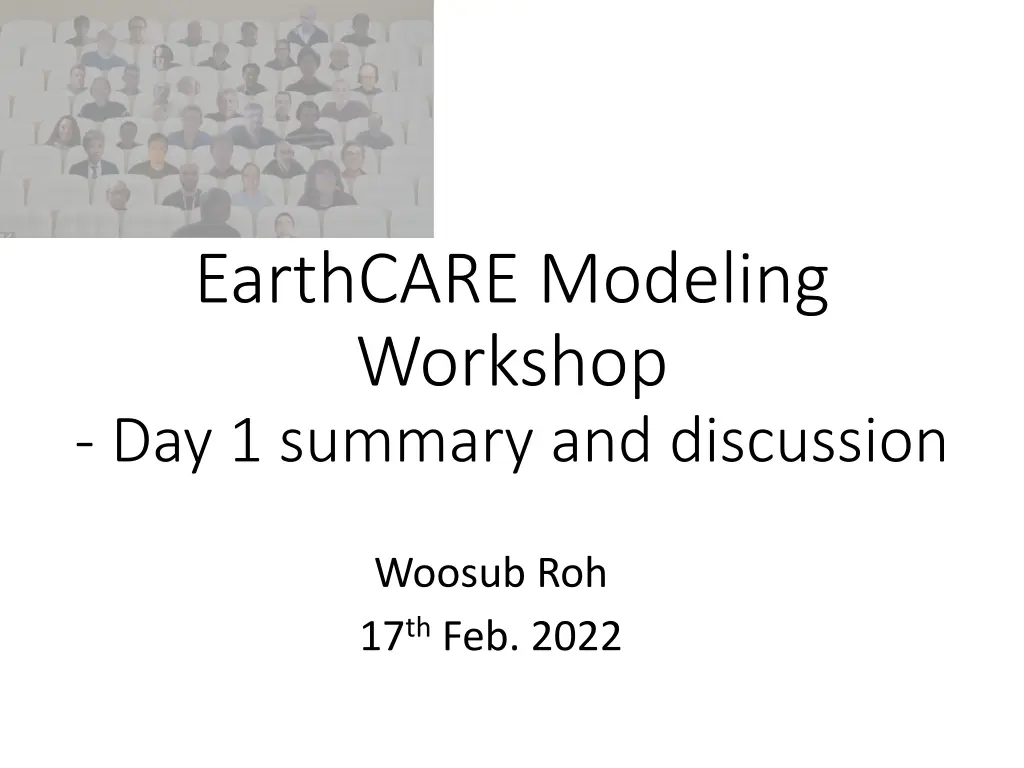
EarthCARE Modeling Workshop Day 1 Summary Discussion Feb 17th 2022
Explore key topics from Day 1 of the EarthCARE Modeling Workshop featuring presentations on EarthCARE mission overview, simulators, assimilations, and more. Gain insights into satellite collaborations, algorithm development, and product expectations for the EarthCARE mission. Dive into discussions on using EarthCARE assimilation for model evaluation and assimilation of all-sky data from geostationary imagers. Stay informed about the latest advancements in Earth observation and climate modeling.
Download Presentation

Please find below an Image/Link to download the presentation.
The content on the website is provided AS IS for your information and personal use only. It may not be sold, licensed, or shared on other websites without obtaining consent from the author. If you encounter any issues during the download, it is possible that the publisher has removed the file from their server.
You are allowed to download the files provided on this website for personal or commercial use, subject to the condition that they are used lawfully. All files are the property of their respective owners.
The content on the website is provided AS IS for your information and personal use only. It may not be sold, licensed, or shared on other websites without obtaining consent from the author.
E N D
Presentation Transcript
EarthCARE Modeling Workshop - Day 1 summary and discussion Woosub Roh 17thFeb. 2022
Contents of Day 1 Contents of Day 1 Introduction: Masaki Satoh (AORI/The University of Tokyo) "General remarks: introduction to model- satellite collaborations": Quick Introduction of WS Hajime Okamoto (RIAM/CIRAP, Kyushu University) "Development of algorithms and expected products for EarthCARE mission" Takuji Kubota (JAXA) "EarthCARE Overview" Tobias Wehr (ESA) "EarthCARE ESA product" Simulators: Tempei Hashino (Kouchi Tech. Univ.) "Overview of Joint Simulator and application to GCM" Alejandro Bodas-Salcedo (Met Office) "COSP contributions to CMIP5&6" Assimilations: Mark Fielding (ECMWF) "Using EarthCARE assimilation as a route to model evaluation" Zhiquan Liu (NCAR) "Assimilation of all-sky data from geostationary imagers with the Model for Prediction Across Scales"
Summary of overview 1 Prof. Satoh Introduction to the topic and issues of workshop EarthCARE (ECARE) launch: Sep. 2023 Model activities using NICAM and Joint simulator for ECARE Evaluation history of NICAM using ISCCP, CALIPSO-COSP, T3EF-SDSU, J- SIM, ground observations Intercomparison of global storm resolving models (DYAMOND) Tunning of microphysics (terminal velocity of snow, rain) for MJO simulations. Prof. Okamoto Doppler cloud radar higher sensitivity -35dBZ (-28dBZ CloudSat), increase of low cloud detection HSRL, new parameter (lidar ratio), direct observation of extinction Introduction to KU cloud type algorithms using CloudSat and CALIPSO Ice particle type for ATLID using lidar ratio and depolarization ratio Fast multiple scattering for Water clouds in ATLID Dust extinction affects ice cloud fraction (Kawamoto et al. 2021) Muti-filed-of-view multiple-scattering polarization lidar and ground based validation for EarthCARE
Summary of overview 2 Dr. Kubota Introduction to JAXA EarthCARE product Needs (the vertical structure of clouds and aerosol layers) Mean local time: approx. 14:00(Descending), 2:00 (Ascending) More sensitivity than CloudSat/CPR with 2.5m antenna CPR L1 product (JAXA) ATLID, MSI,BBR (ESA) data ,6 months after launch, L2a (single) 9 months after launch, L2b (synergy), 18 months after launch L2 algorithms development by 6 PIs JAXA A-Train product for the EarthCARE Promotion for weather/climate model communities (MIROC, MSRI- ESM, CReSS, Asuca, MASINGAR, SPRINTARS, VENUS/NICAM-Chem) QnA: about radiation product, radiation heating for clear sky, yes QnA: about the launch date, high confidence, technical issues about ATLID, CPR
Summary of overview 3 Dr. Wehr The flow chart of ESA product, Nomenclature of data product X-JSG: joint standard grid Vertical approx. 103 m, along-track approx. 1km , Across-track resolution fixed 1km BBR L2B data is reliable. The flux calculation using synergic retrieval data shows better performances. Algorithm testing using GEM model QnA: 4-sensors radiation calculation from Masunaga, interaction of 4-sendor products between JAXA and ESA independent QnA: about precipitation product from Johannes, rain and snow using ground temperature
Summary of simulator 1 Prof. Hashino Introduction to Joint simulator Visible and infrared imager, Broadband, microwave radiometer, Radar, lidar Radar-lidar diagnosis for IWC and Reff (BETTER diagram) Impacts of phases of cloud particles on radiation Joint-simulator work flow for GCM and CRM Comparison of COSP and J-SIM ( Good agreement on scattering ratio, differences in dBZ) Uncertainty in the signal simulation for coarse GCM outputs Precipitation fraction assumption has a large impact on CFAD. Application of Doppler velocity (W vs Height, Ze Vs Doppler velocity) How to use Doppler velocity of the EarthCARE in GCM? QnA Issues of GCM applications (Bjorn), identification of difference dBZ between COSP, J-SIM (scattering model, precipitation fraction), ice sedimentation of stratiform precipitation in GCM grid (Satoh) QnA a few kilometer simulation has also heterogenous condition (Dufreesne)
Summary of simulator 2 Dr. Bodas-Salcedo Introduction to COSP contributions to CMIP5&6 ISCCP, CloudSat, CALIPSO, MODI, MISR, PARASOL, CLARA Explanations about the simulation setup of CMIP6 (Webb et al. 2017) The potential of multidecade spaceborne lidar record to constrain cloud feedback (Chepfer et al. 2018) Too few, too bright of tropical low-cloud problem in CFMP5 models (Nam et al. 2012) Evaluating climate model s cloud feedbacks against expert judgment (Zelinka et al. 2022) Origins of the solar radiation biases over the Southern Ocean in CFMIP2 models using CALIPSO and ISCCP (Boda-Salcedo et al., 2014) EarthCARE in COSP (consideration about uv lidar) QnA ECARE lidar ratio in COSP and Doppler velocity in COSP (Suzuki) Comment 3 years mission life, the 6 months commissioning phases (Wehr)
Summary of data assimilations 1 Dr. Fielding How can assimilating EarthCARE improve forecasts and improve the presentation of cloud processes? Observation operators for radar and lidar on satellite (Michele 2012, Fielding 2021) Observation error and operator error Data assimilation Indirect: model validation using observation operators as instrument simulator, monitoring of instruments/product to detect instrument/model problems, Direct: best estimate of initial state Future research: Reducing microphysical uncertainty via observation operator parameters, Interactive parameter estimations Online observation operators: instant qualitative check, higher resolution simulations ( online calculation) Examples using CFODDs (Suzuki et al. 2010) To maximize EarthCARE s potential, boundary layer cloud and Doppler velocity Off-line parameter estimation of observation operator microphysical assumption Multi-parameter minimization using microwave radiances (Geer 2021, AMT) QnA uncerntainty of 3D cloud fields in model, 4D product of EarthCARE userful (Satoh)
Summary of data assimilations 2 Dr. Liu Introduction to assimilation of all-sky AMSU-A and ABI/AHI with Global JEDI-MPAS Evaluations of WSM6 and Thomson schemes using AHI CH 9 Tests of clrama, cldama, abiahi (data assimilation) Experiment setting: Dual-resolution 3DEnVar, 1200km horizontal, 6km vertical, WSM6, CRTM Clarama better results for specific humidity Larger impact from all-sky AMSU-A Interested in use of the EarthCARE
Collocated data(merged data) for simulator users Collocated data or merged data with ATLID, CPR, MSI, BBR (X-JSG: joint standard grid Vertical approx. 103 m, along-track approx. 1km , Across-track resolution fixed 1km) Calibration of the L1 data, reliable product? The resolution of the data - Reduction of errors of sensors with more sampling or integration - What is the suitable resolution of observation data for modelers and accuracy? - 1km, 5km (GSRMs), 10km (GCMs)?
Discussion and comment? What kinds of physical parameters and information of the EarthCARE are needed? How to understand the uncertainty of the EarthCARE products? What is an expected result from the experience from CloudSat and CALIPSO? The careful points to use satellite simulators (forward operator) like J-SIM or COSP to simulate signals of the EarthCARE satellite? The issues of the subgrid in the model?







